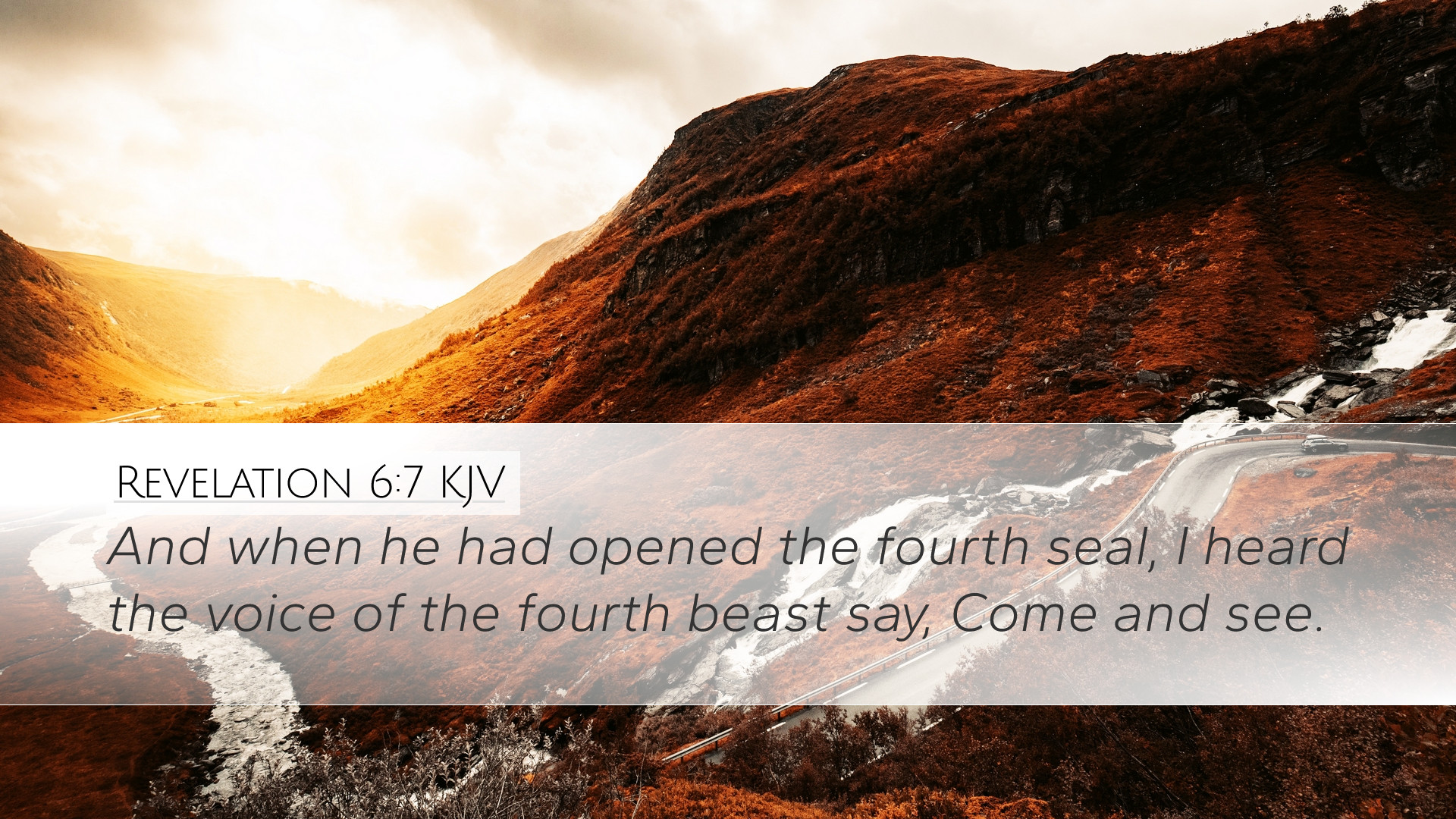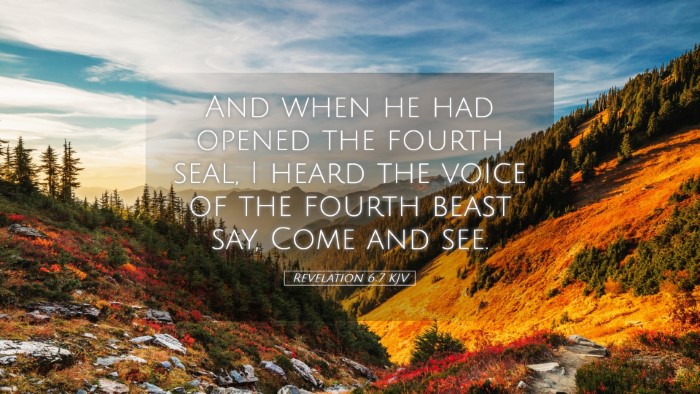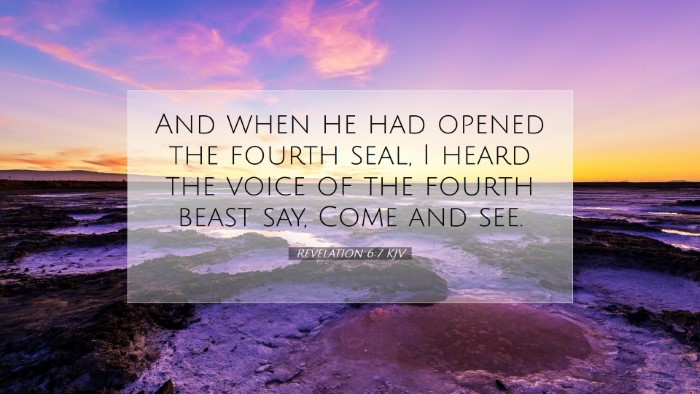Commentary on Revelation 6:7
Revelation 6:7 (KJV): "And when he had opened the fourth seal, I heard the voice of the fourth beast say, Come and see."
Introduction
The Book of Revelation is a profound prophetic text, often enigmatic and layered with symbolism. Its focus on the eschatological events leading to the culmination of history provides fertile ground for theological reflection. Revelation 6:7 introduces us to the fourth seal, designating a significant shift in the unfolding narrative of judgment.
The Opening of the Fourth Seal
In examining the opening of the fourth seal, we witness the unveiling of deeper spiritual realities that confront humanity. Matthew Henry asserts, “The opening of the seals signifies the progression of God’s sovereign plan in history, leading to decisive judgments.” This notion of divine sovereignty is central; God orchestrates events not only at the time of John’s vision but throughout the entire narrative of human history.
The Fourth Beast's Invitation
As John hears the voice of the fourth beast—a creature previously described with awe—instructing him to “come and see,” it denotes an invitation not just to observe, but to understand the spiritual implications of what is to come. Adam Clarke offers insight on the significance of the beasts: “The four beasts represent the fullness of creation in its service to the divine plan, each embodying attributes essential for the unfolding of God's purposes.”
The Symbol of the Rider
Following the invitation from the beast, we recognize the symbolic nature of the riders in this apocalyptic vision. The fourth seal corresponds to a pale horse, its rider representing death and Hades, as further elaborated in subsequent verses (Revelation 6:8). Albert Barnes emphasizes, “The color pale signifies the finality of death, illustrating the inevitable consequence of judgment as seen in the passage of history.” The pale or sickly hue indicates a divine judgment, where humanity's choices, sinful nature, and defiance result in dire consequences.
Connection to the Previous Seals
In context, the fourth seal follows a series of judgments—each preceding it establishing a pattern of human tribulations and divine retribution. Matthew Henry states, "Each seal unveils increasing levels of chaos in the human experience, and with each, God’s justice prevails." This understanding allows for a holistic reading of the text; the seals build upon one another, revealing the escalating nature of divine judgment in a world steeped in sin.
Theological Implications
On a theological level, Revelation 6:7 and the opening of the fourth seal signify the overarching themes of judgment, mercy, and ultimate sovereignty of God. Adam Clarke reflects on the symbol of death: “Death, as depicted here, is not merely an end but serves a purpose in redirecting humanity toward repentance.” This interpretation emphasizes the duality of judgment—not simply as condemnation, but also as an expression of God’s desire for restoration and reconciliation with creation.
The Role of The Church
For pastors and theologians, this verse beckons reflection on the church’s role amid societal upheaval. The voice of the fourth beast resonates with urgency, calling for a response. “The church must be vigilant,” Clarke observes, “to echo the invitation to come and witness God’s unfolding plan, while also extending hope through the gospel.” Herein lies a challenge and responsibility for believers in every generation.
The Interpretation for Modern Believers
As contemporary readers, how do we engage with Revelation 6:7? The warnings within the seals evoke reflection on personal and communal levels. Albert Barnes posits, “The fourth seal serves as a reminder that divine judgment is not merely historical but imminent, stirring believers to a state of readiness.” This readiness involves both introspection and outward proclamation of the truth of the Gospel.
Conclusion
In summation, Revelation 6:7 and its surrounding verses carry profound implications for understanding God’s justice and mercy. The vivid imagery and solemn warnings embedded in this text call for a circumspect response from the church and the wider community of faith. Matthew Henry encapsulates the essence of this call: “Let us be prepared for that day, knowing that our redemption draws near.” The fourth seal, then, is not merely a vision of death but a clarion call to witness God's ultimate plan of redemption unfolding in history.
Key Themes and Insights
- Divine Sovereignty: Recognizing God's control over historical events.
- Invitation to Witness: The role of the church in understanding and proclaiming God’s truth.
- Judgment and Mercy: Death as both a consequence and a redemptive opportunity.
- Call to Readiness: Encouragement for believers to remain vigilant and prepared.


